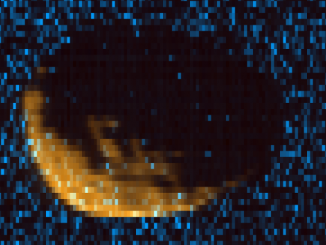
These layered hills, seen in this false-colour image of a portion of Arabia Terra on Mars, may possibly have a watery origin. Arabia Terra is a highland region in Mars’ northern hemisphere, dating back to the red planet’s Noachian geological era, around four billion years ago. Given the region’s great age, it sports many craters, inside of which are often found layered mounds such as those in this image from NASA’s Mars Reconnaissance Orbiter.
The layered rocks in Arabia Terra come in three forms. The first type, seen in this image, is described by alternating layers of light and dark material, which may represent episodic periods of sedimentary deposition. One can imagine an ancient lake filling the crater in which these mounds are located, the shoreline changing as the sea level varied with the Martian climate, the tides leaving behind alternating layers of mudstone and limestone. Or, perhaps the layers signify different volcanic events that interrupted the usual depositional processes by dumping layers of ash onto the mounds.
The second type consists of layers that look like they are composed from the same material and form ‘stair-step’ mesas, while the third type features dark, thin layers of rubbly, uneven material, and often produce boulders that roll down slopes. This third type could be the result of lava having once flowed through a sandy region; afterwards, the basaltic rock hardened, and on cliff edges where sandy material crumbles away, the larger chunks of basaltic rock end up giving way and rolling down to the bottom of the crater floor. Image: NASA/JPL–Caltech/University of Arizona.



